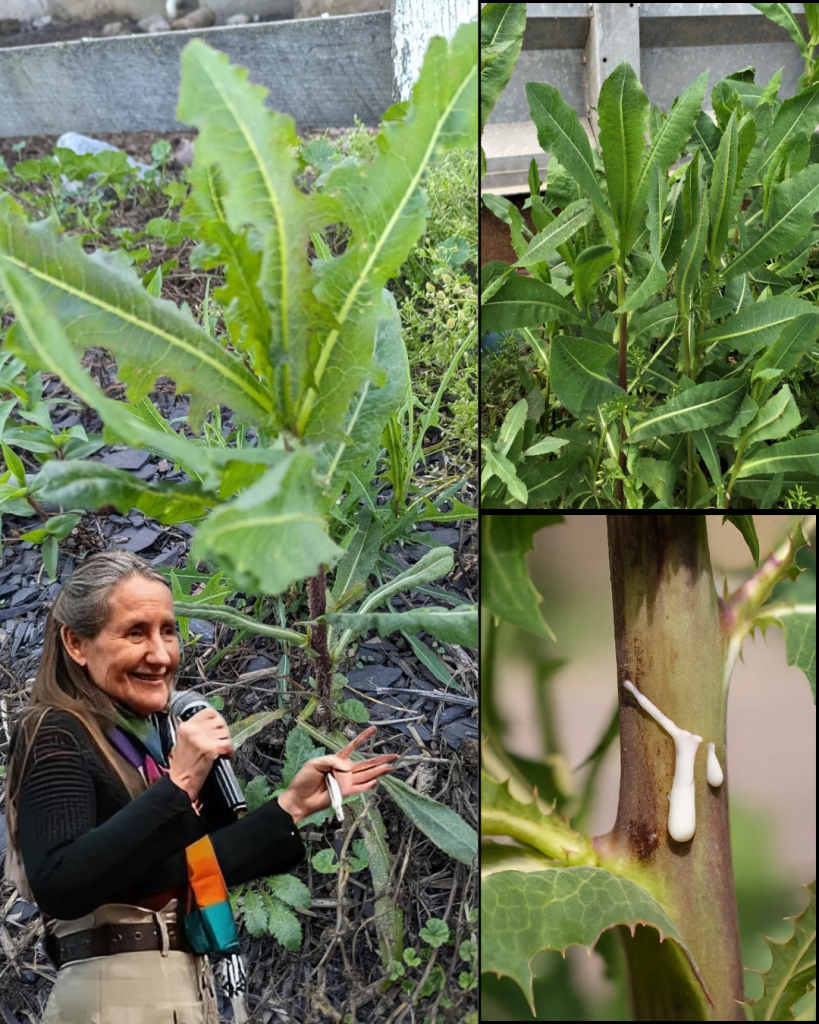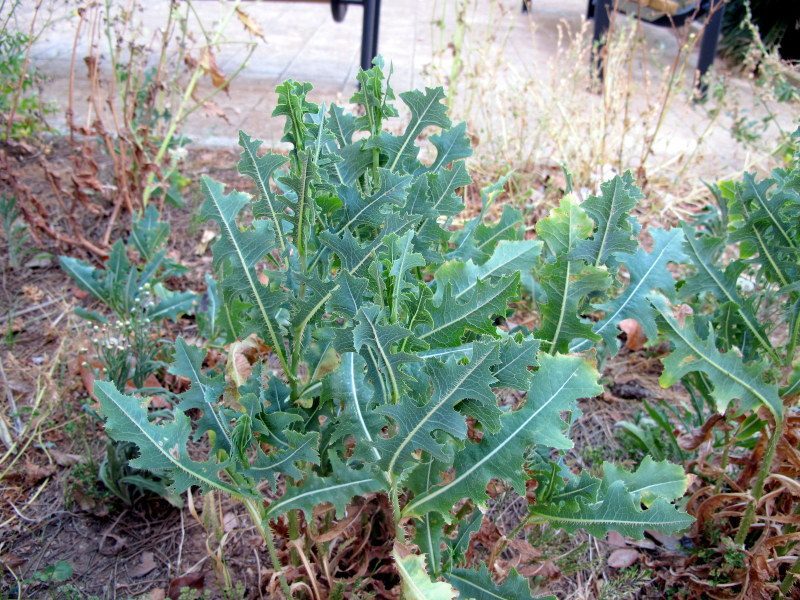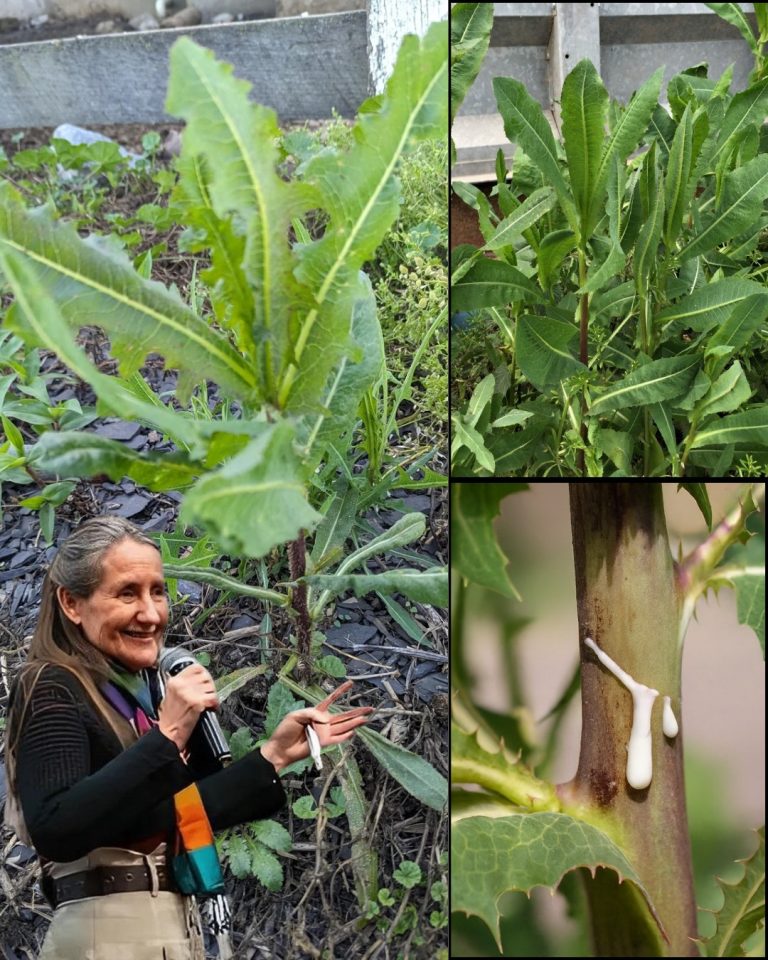What if a common weed growing by the roadside held the key to easing your aches and calming your mind? Meet wild lettuce (Lactuca virosa), often called “opium lettuce,” a plant with a centuries-old reputation for its soothing, pain-relieving powers. Its milky sap, known as lactucarium, is a natural treasure packed with lactucin and lactucopicrin—compounds that offer sedative and analgesic effects without the risks of opiates. Intrigued? This guide will walk you through how to collect wild lettuce sap, its remarkable benefits, and how to use it safely to unlock its full potential. Get ready to discover why this humble plant is a must-know for natural wellness enthusiasts!

🌱 What Makes Wild Lettuce Sap So Special?
Wild lettuce is no ordinary weed. Found in fields, roadsides, and disturbed soils across North America, Europe, and Asia, this tall, blue-green plant has been used since ancient times for its sedative, analgesic, and anti-inflammatory properties. The magic lies in its lactucarium, a milky sap that oozes from cut stems and leaves, drying into a potent resin. Unlike opium, it’s non-addictive, earning it the nickname “poor man’s opium” for its gentle, calming effects. Whether you’re seeking relief from pain, stress, or sleeplessness, wild lettuce sap offers a natural alternative worth exploring.
🪴 How to Collect Wild Lettuce Sap Safely
Harvesting lactucarium requires care and precision to ensure potency and safety. Follow these steps to collect it like a pro:
🌟 Identify the Right Plant
Wild lettuce (Lactuca virosa) grows 2-6 feet tall with jagged, spiky leaves and small yellow flowers. Look for its blue-green hue and prickly underside. When cut, it releases a milky, bitter sap—confirming it’s the real deal. Avoid confusing it with toxic lookalikes like hemlock, which lacks the milky sap. Use a field guide for accurate identification.
🌾 Choose the Best Time
Harvest in late spring to early fall, ideally in the morning after dew dries but before the day’s heat. Mature plants, especially pre-flowering, produce the most sap.
🔪 Harvest the Sap
- Wear gloves to protect skin from potential irritation.
- Using a clean, sharp knife, cut the stem near the base.
- Collect the oozing milky sap with a spoon or scrape it onto a glass plate.
- Make additional cuts higher up the stem or branches to gather more sap.
- Allow the sap to dry naturally into a brownish resin.
- Store in an airtight container away from moisture and light.
Pro Tip: Harvest from clean, pesticide-free areas to avoid contamination. Process fresh plants for maximum potency, as lactucarium degrades over time.
🩺 7 Powerful Benefits of Wild Lettuce Sap
Wild lettuce sap has been cherished for centuries, and modern interest is reviving its use. Here are seven compelling reasons to consider it:
🩹 Natural Pain Relief
Lactucin and lactucopicrin act on the central nervous system, offering relief from headaches, muscle aches, and joint pain. A 2006 study found lactucopicrin to be as effective as ibuprofen in mice at half the dose, making it a promising alternative for mild to moderate pain.
😴 Promotes Restful Sleep
Its sedative properties calm racing thoughts and ease insomnia. Users report better sleep quality after consuming small doses, making it a gentle alternative to sleeping pills.
😌 Reduces Stress and Anxiety
Wild lettuce sap interacts with GABA receptors, promoting relaxation and easing mild anxiety. Its calming effects help you feel centered without heavy drowsiness.
🫁 Soothes Respiratory Issues
Traditionally used for coughs, asthma, and bronchitis, its antispasmodic properties reduce airway inflammation and mucus buildup, supporting easier breathing.
🔥 Fights Inflammation
Sesquiterpene lactones in the sap have anti-inflammatory effects, potentially easing conditions like arthritis or gut inflammation, as seen in studies on related Lactuca species.
🧬 Antioxidant Support
Lactucarium’s antioxidants combat oxidative stress, protecting cells from damage and supporting overall wellness.
🌟 Mild Euphoria
In small doses, wild lettuce sap may induce a subtle sense of calm and well-being, historically valued for its gentle, non-intoxicating effects.

🫖 How to Use Wild Lettuce Sap
Wild lettuce sap can be used in various forms, but caution is key due to its potency. Here’s how to incorporate it safely:
💧 Tincture
- Mix dried sap with high-proof alcohol (like vodka) in a jar.
- Let it steep for 2-4 weeks, shaking occasionally.
- Strain into a dropper bottle.
- Start with 1-2 drops diluted in water, taken 1-2 times daily. Increase slowly if needed, but never exceed 12-24 drops daily.
🍵 Tea (Using Leaves, Not Sap)
- Steep 1-2 teaspoons of dried wild lettuce leaves in 1 cup of hot water for 10-15 minutes.
- Drink before bed for relaxation or to ease mild pain. Note: Sap is not water-soluble, so tea is less potent for pain relief.
🩹 Topical Application
- Mix dried sap with a carrier oil (like coconut or olive oil).
- Apply to sore muscles or joints for localized pain relief. Avoid broken skin to prevent irritation.
Pages: 1 2
